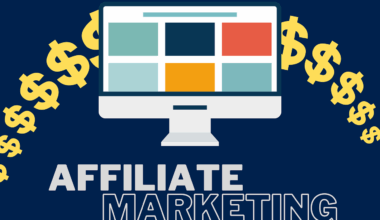Native vs Banner Ads: Which Mobile Format Performs Better?
In the landscape of mobile marketing, advertisers constantly explore effective advertisement formats. Two of the most popular options are native ads and banner ads. Both have unique characteristics, targeting methods, and engagement levels that impact their performance. Native ads blend seamlessly with the content of apps, allowing users to engage without feeling interrupted. On the other hand, banner ads are usually displayed at the top or bottom of mobile screens. Here, we will dissect the latter and evaluate how they each perform. Understanding how these ads can maximize brand visibility and conversion is essential for marketers aiming for success in the digital world.
Native ads offer a more organic experience while browsing apps and websites. By mimicking the style and format of the platform they appear on, they reduce visuals that lead to banner blindness. Banner ads, however, are commonly recognized for their fixed positioning that draws attention immediately, typically through bright visuals and call-to-actions. Careful consideration is needed regarding placements for each ad type. Marketers often need to weigh the benefits of the smooth integration of native ads against the instant visibility of banner ads. This analysis can guide the selection process, helping brands identify which format aligns better with their goals.
Engagement Metrics Comparison
Engagement metrics play a vital role in assessing marketing success. Native ads generally outperform banner ads in terms of user interaction and click-through rates. Native ads achieve a higher engagement rate because they offer valuable content to the reader, positioned seamlessly within the overall experience. Banner ads often get ignored due to visual clutter, resulting in significantly lower engagement levels. However, the success of either format can depend on the target audience and context of the ad placement. Tailoring ad strategies based on audience preferences may create opportunities for brands to exploit engagement metrics effectively.
Considering the overall return on investment (ROI) is another critical factor. Native ads tend to yield higher ROI due to their interactive nature and greater brand visibility over time. With users spending more time engaged with native content, the chances of retaining their attention lead to better brand association. Conversely, banner ads are advantageous for quick promotions and generating immediate traffic, but their effectiveness may decline over longer campaigns. Additionally, advertisers need to balance between short-term and long-term strategies based on their business objectives, providing adequate focus for both formats where applicable.
Cost Efficiency in Ad Formats
When assessing the cost efficiency of each format, native ads may require a more considerable budget for content creation. The high-quality content needed makes them more expensive to develop, which could be a barrier for smaller businesses. However, their higher engagement often justifies the cost in the form of increased ROI. Conversely, banner ads can be more cost-effective due to lower production costs and quicker launch times. Advertisers might lean toward banner ads for entry-level campaigns and might later transition to native ads as their budgets and ROI grow stronger over time.
Analysis of user experience is crucial in examining both ad types. Native ads, when crafted well, can enrich the content experience for users and improve brand perception. Users appreciate ads that add value without disrupting their interaction with the offered content. In contrast, banner ads risk creating frustration when they obstruct the user journey. Ensuring that ads appear less intrusive can help mitigate negative experiences. Balancing effective ad presentation recognizes user preferences and attitudes, which can lead to optimizing marketing strategies and improving overall satisfaction.
Targeting and Personalization Strategies
Targeting capabilities are vital for successful advertising campaigns. Native ads can offer advanced targeting options, such as behavioral and contextual targeting, enabling advertisers to reach specific audience segments effectively. By utilizing data, teams can create personalized experiences through tailored content. In comparison, banner ads often utilize broad targeting, leading to less precise results. Effective targeting is crucial for maximizing engagement and conversion rates, and brands can leverage these insights to create dynamic campaigns that speak directly to their audience’s needs. This personalization ultimately influences the success of the advertisements.
As the mobile advertising landscape evolves, keeping pace with the latest trends and technologies is essential. Technologies like machine learning and AI can help optimize both native and banner ads for performance. Marketers must continue to experiment, test, and analyze different ad formats for their target markets while staying informed about changes in consumer behavior. Continuous adaptation to market dynamics enhances advertising effectiveness and ensures that investments yield favorable outcomes. Assessing the strengths and weaknesses of both native and banner ads can help marketers formulate winning strategies that capitalize on evolving trends.


